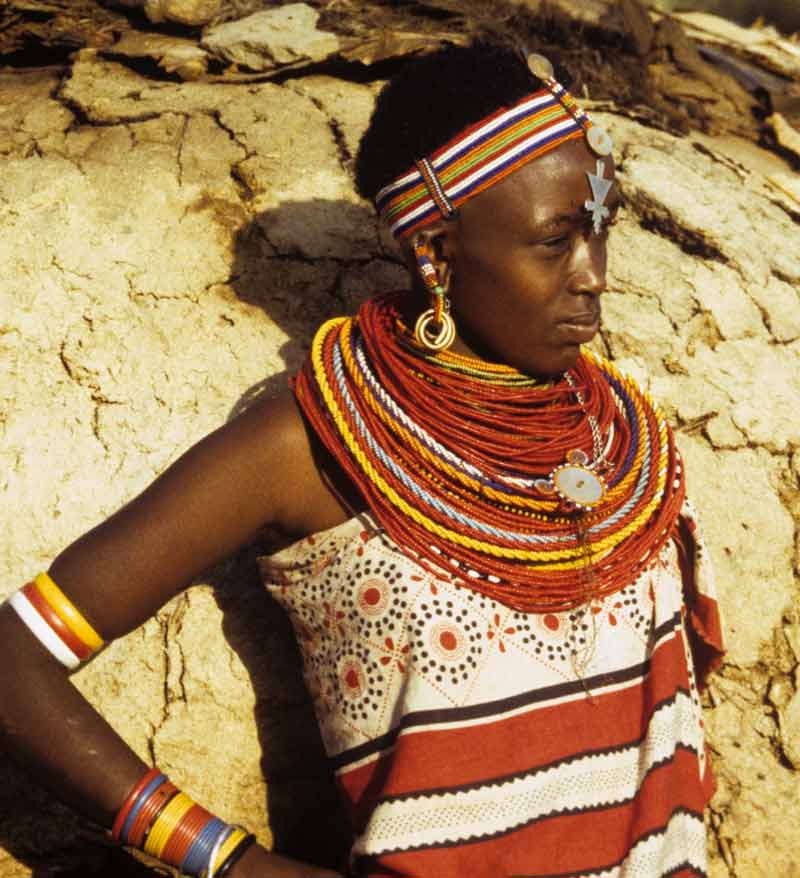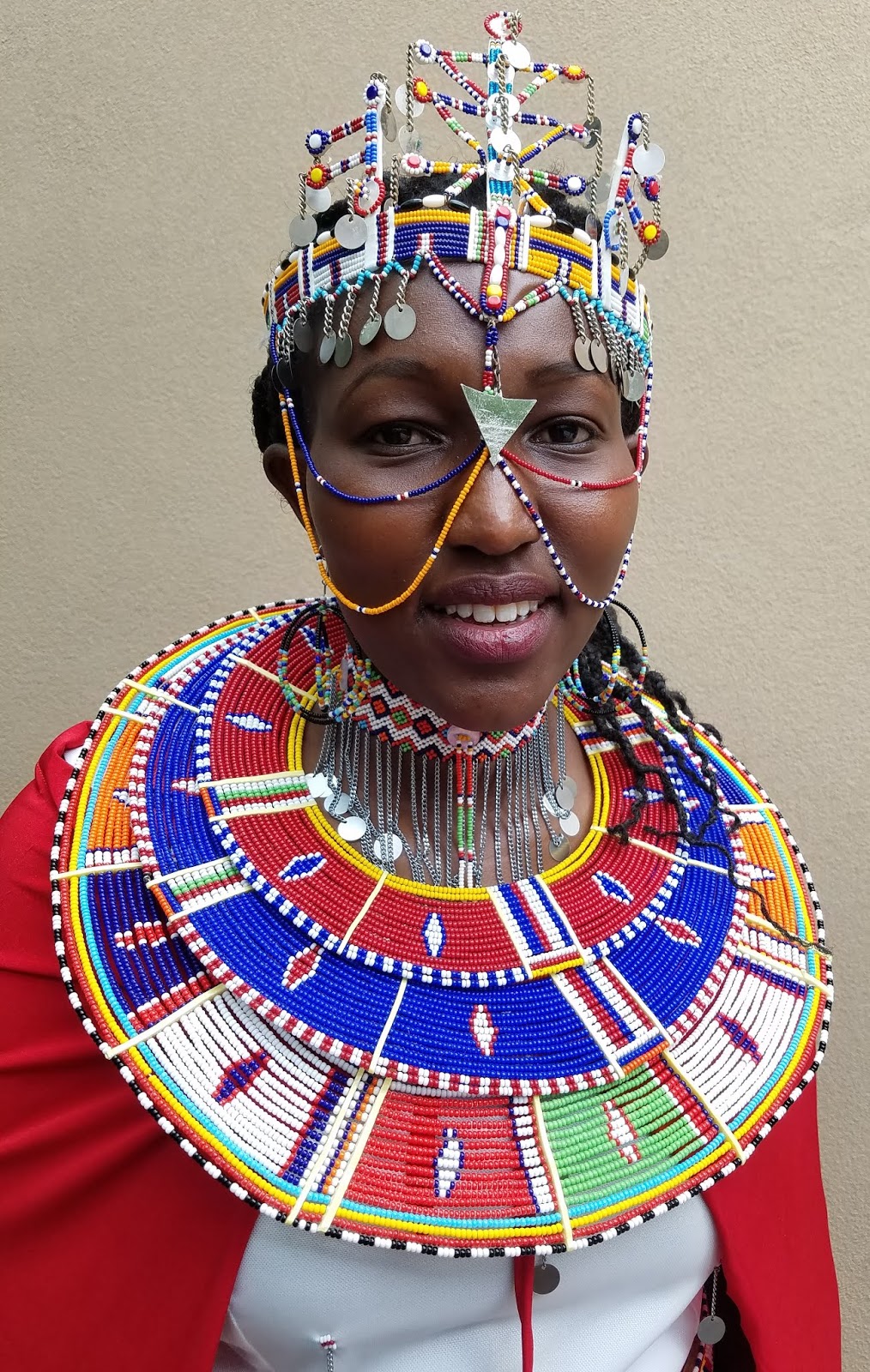Kenya, a land of diverse landscapes, vibrant traditions, and a rich cultural tapestry, holds a treasure trove of jewelryheritage that reflects the depth of its history, beliefs, and artistic ingenuity. From intricate beadwork to stunning metalwork, Kenyan jewelry tells stories of generations past and celebrates the beauty of its people. Let's delve into the captivating world of Kenyan jewelry heritage, exploring its various forms, significance, and the artisans who keep this heritage alive.
Kenyan Jewelry Heritage
Kenyan cultural heritage is a vibrant mosaic formed by the diverse ethnic groups that call this East Africannation home. With over 40 distinct ethnicities, Kenya's cultural identity is richly woven from the threads of various languages, traditions, and practices. Oral traditions, including storytelling and dance, play a central role in passing down knowledge and values across generations.
Music, art, and festivals serve as vibrant expressions of this heritage, reflecting the unique customs of each group. From the rhythmic beats of traditional drums to the intricate beadwork and pottery, Kenya's cultural heritage is a celebration of both its ancestral roots and the spirit of innovation. As Kenya embraces modernization, efforts to preserve its cultural heritage through museums, institutions, and community initiatives are vital to ensure that the country's diverse traditions continue to thrive and resonate with future generations.
Color Symbolism In Kenyan Jewelry Heritage
Kenyan jewelry is not only relevant culturally, but it is also VERY BEAUTIFUL! The beautiful color patterns in the beaded Maasai necklacesand braceletsastound me. I accepted my curiosity and made the decision to learn more when I discovered that the colors were carefully chosen and that they each have a special symbolism.
Red beads are chosen not only for their aesthetic appeal but also because they may symbolize courage. The color red represents the harmony of tribal families and communities. It might also stand in for the blood of calves sacrificed during festivities, which connects back to cohesion and sociability. In Kenyan jewelry, the cows also stand for the color white. The Maasai tribe relies on cow milk as its main food source to sustain and fortify its members. Additionally, while white beads plainly denote health, they also foster ideas of purity and calm.
Blue beads consider the sky, which is significant since it contributes to the nutrition of cattle by supplying rainfall for the grass and ground. Other colors include black, which embodies the color, unity, and harmony of the people, as well as green, which stands for the soil and earth that the cows eat from. As tones of the gourds that are traditionally used to serve guests cow's milk, colors like orange and yellow also reflect hospitality. The combination of all these hues creates a moving declaration of respect, love, and gratitude for life and family.
Beads - Threads Of Tradition And Identity
Beadworkholds a special place in Kenyan culture, serving as a powerful symbol of identity, status, and storytelling. For centuries, various ethnic groups, such as the Maasai, Kikuyu, and Turkana, have used beads to create intricate jewelry pieces. These beads are often painstakingly handcrafted from materials like glass, bone, wood, and even seeds. They are strung together to form intricate necklaces, bracelets, and anklets, each design holding its unique meaning.
Maasai Beadwork - Colorful Expressions Of Culture
The Maasaipeople are renowned for their intricate beadwork, which plays a central role in their cultural and social expressions. Maasai women traditionally create elaborate necklaces, collars, and earringsthat are worn during important ceremonies and events. The colors of the beads have significant meanings; red symbolizes bravery, blue represents the sky and the heavens, and green signifies the land and prosperity.
Metalwork - Crafting Elegance From Raw Materials
In addition to beadwork, Kenyan jewelry heritage also includes stunning metalworkthat showcases the mastery of local artisans in transforming raw materials into exquisite adornments.
The Art Of Filigree - Swahili Influence
The coastal region of Kenya, with its rich history of trade and cultural exchange, has given rise to the art of filigree. Influenced by Swahili traditions and Arabic aesthetics, filigree jewelry is characterized by delicate patterns intricately crafted from goldand silverwires. These pieces often feature intricate geometric designs that exude elegance and refinement.
Cultural Significance - Beyond Aesthetics
Kenyan jewelry heritage goes beyond mere aesthetics; it is deeply intertwined with cultural, spiritual, and social significance.
Rites Of Passage - Transition And Adornment
Jewelry plays a vital role in Kenyan rites of passage, marking significant life events such as birth, marriage, and initiation into adulthood. Young girls receive beaded jewelry as they transition into womanhood, while elaborate pieces are worn by brides to symbolize their marital status and family wealth. You can learn some rites with the informative articlesfrom Urban Kenyans.
Spiritual Beliefs - Protection And Connection
Many Kenyan jewelry pieces are believed to possess spiritual properties. The Maasai, for instance, wear beaded jewelry adorned with charms to protect themselves from evil spirits and bring good fortune. These pieces serve as a tangible connection to the spiritual realm, fostering a sense of security and belonging.
Artisans - Guardians Of Heritage And Innovation
Artisansacross Kenya continue to be the custodians of the country's jewelry heritage. These skilled craftsmen and women blend traditional techniques with contemporary designs, ensuring that the legacy of Kenyan jewelry remains alive and relevant in today's world.
The Challenges And Hopes Of Preservation
While modernization and globalization pose challenges to preserving traditional practices, there is a growing movement to celebrate and safeguard Kenyan jewelry heritage. Initiatives to provide training, resources, and market access to local artisans are helping them maintain their craft while adapting to changing tastes.
Contemporary Evolution
While Kenyan jewelry heritage is deeply rooted in tradition, it has also evolved to embrace contemporary influences. As the world becomes more interconnected, Kenyan artisans are finding innovative ways to blend age-old techniques with modern designs.
Fusion Of Styles
Contemporary Kenyan jewelry often showcases a fusion of traditional and modern elements. Artisans experiment with materials, combining traditional beads with metals, leather, and even recycled materials to create unique pieces that cater to diverse tastes. This fusion not only appeals to the younger generation but also brings new life to traditional techniques.
Global Appeal - From Local Markets To International Runways
The allure of Kenyan jewelryis not limited to local markets. International designers and fashion enthusiasts have recognized the cultural significance and artistic beauty of Kenyan jewelry, leading to its inclusion in fashion shows, exhibitions, and even high-end boutiques around the world. This global recognition not only supports the livelihoods of Kenyan artisans but also contributes to the preservation of the country's cultural heritage.
Empowerment And Economic Impact
Kenyan jewelry heritage isn't just about adornments; it's about empowerment and economic growth.
Empowering Women - Economic Independence
In many Kenyan communities, women are at the forefront of jewelry-making, contributing significantly to their families income. Beadwork and jewelry crafting provide opportunities for women to gain financial independence, strengthen their roles within their families, and even foster entrepreneurial skills. Organizations and cooperatives have emerged to provide training and support to women artisans, amplifying their impact on local economies.
Tourism And Cultural Exchange - Showcasing Heritage
Kenyan jewelry heritage also plays a vital role in the country's tourism industry. Visitors from around the world are drawn to the intricate beauty and cultural significance of these adornments. Jewelry workshops, cultural tours, and artisan cooperatives offer tourists a chance to immerse themselves in the rich artistic traditions of Kenya while directly supporting local communities.
Sustainability And Responsible Practices
As global awareness of sustainable practices grows, Kenyan artisans are taking steps to ensure the longevity of their craft while respecting the environment.
Ethical Sourcing - Preserving Natural Resources
Many Kenyan artisans are committed to sourcing materials responsibly. By using locally available resources and repurposing materials, they minimize the environmental impact of their craft. Additionally, there is a push towards using eco-friendly techniques, such as natural dyeing methods and recycled materials, to create jewelry that reflects both cultural heritage and environmental consciousness.
Preserving Techniques - Passing Down Knowledge
Sustainability also involves passing down traditional knowledge to the next generation. Apprenticeships and training programs are helping to ensure that the intricate techniques and skills involved in Kenyan jewelry-making are not lost to time. By equipping young artisans with the tools to carry on these traditions, the heritage of Kenyan jewelry remains secure.
Future Prospects - Continuing The Legacy
As Kenya navigates the challenges of modernity and global integration, the future of its jewelry heritage remains promising.
Education And Awareness - Cultural Appreciation
Educational initiatives within Kenya and beyond are helping to foster a deeper appreciation for Kenyan jewelry heritage. By understanding the stories behind each piece and recognizing the skill required to create them, individuals can better respect and value the cultural significance of these adornments.
Collaboration And Innovation - Pushing Boundaries
Collaboration between artisans, designers, and even technology experts is fostering innovation within the realm of Kenyan jewelry. The integration of digital tools, such as 3D printing and virtual reality, is not only enhancing the design process but also expanding the possibilities of what Kenyan jewelry can be while maintaining its authenticity.
Cultural Diplomacy
Kenyan jewelry heritage transcends borders, serving as a form of cultural diplomacy that connects people from all walks of life.
Cultural Exchange
Through exhibitions, workshops, and international collaborations, Kenyan artisans share their craft and stories with the world. These cultural exchanges foster understanding, appreciation, and respect for Kenyan traditions, helping to break down barriers and build bridges between different cultures.
Fashion And Identity
In an era where fashion is a powerful means of self-expression, Kenyan jewelry provides a unique way for individuals to showcase their connection to global heritage. People from various backgrounds can adorn themselves with pieces that carry a piece of Kenyan culture, embracing a sense of unity in diversity.
Challenges And Future Resilience
While the future of Kenyan jewelry heritage holds much promise, there are challenges that must be addressed to ensure its continued vitality.
Cultural Appropriation
As Kenyan jewelry gains international attention, there is a risk of cultural appropriation, where elements are taken out of context and commercialized without proper understanding. It's crucial for designers, consumers, and policymakers to ensure that Kenyan jewelry is appreciated with respect for its origins and meanings.
Economic Sustainability
Sustaining the livelihoods of Kenyan artisans is vital for the preservation of this heritage. Fair wages, access to markets, and opportunities for skill development are essential to enable artisans to continue creating jewelry while supporting their families and communities.
A Timeless Heritage In A Changing World
Kenyan jewelry heritage remains a testament to the enduring human desire for connection, expression, and beauty. As the world evolves, this heritage remains a steadfast reminder of the stories, traditions, and values that ground us. It is a timeless thread that weaves through generations, connecting us to the past, anchoring us in the present, and inspiring us as we journey into the future.
People Also Ask
What Is The History Of Jewelry In Kenya?
The history of jewelry in Kenya is deeply intertwined with the diverse cultures and traditions of the country. Jewelry has been a part of Kenyan culture for centuries, serving not only as adornment but also as a reflection of social status, identity, and spirituality.
The use of jewelry dates back to ancient times, when various materials like beads, shells, bones, and metals were crafted into intricate ornaments. Different ethnic groups across Kenya developed their own unique styles and techniques of jewelry-making, each with its distinct symbolism and meaning.
Jewelry in Kenya has been used to mark significant life events, such as births, marriages, and rites of passage. It has also served as a form of currency, a display of wealth, and a means of communication. As Kenya's history evolved through trade, colonization, and cultural exchange, jewelry continued to adapt and incorporate new materials and influences while retaining its cultural significance.
What Is Traditional African Jewelry?
Traditional African jewelry encompasses a wide range of styles, materials, and techniques that vary across the continent's diverse cultures. Similar to Kenya, many African communities use jewelry as more than just decorative items; they hold deep cultural and spiritual significance.
African jewelry often features materials like beads, metals, ivory, shells, bones, and natural fibers. Intricate beadwork, metal casting, filigree, and carving are some of the techniques used to create these adornments. The designs and motifs often carry symbolic meanings, representing aspects such as fertility, status, spirituality, and the natural world.
What Is The Significance Of Jewelry In African Culture?
Jewelry holds profound cultural significance in African societies, reflecting values, beliefs, and social roles. Here are some key aspects of its significance:
- Identity and Status:Jewelry is often used to indicate one's identity, tribe, or social status. Different designs and materials can signify an individual's role within the community or their achievements.
- Rites of Passage:Jewelry is integral to various rites of passage, such as initiation ceremonies, coming-of-age rituals, and marriage. These adornments mark transitions from one life stage to another and symbolize a person's changing roles and responsibilities.
- Spirituality and Protection:Many African communities believe that certain jewelry pieces have spiritual powers and can offer protection from negative forces. Amulets, charms, and talismans are worn for their perceived abilities to ward off evil or bring luck.
- Cultural Heritage:African jewelry is a repository of cultural heritage, preserving ancient techniques, designs, and stories. Passing down jewelry from generation to generation maintains a connection to the past and keeps traditions alive.
- Communication:In some societies, jewelry serves as a non-verbal form of communication. Certain designs or colors can convey messages about a person's mood, marital status, or affiliations.
- Economic and Social Exchange:In some cultures, jewelry has been used as a form of currency or for trade purposes. It can also be given as gifts during ceremonies, strengthening social bonds and relationships.
- Artistic Expression:African jewelry is a form of artistic expression that celebrates creativity and craftsmanship. The intricate designs and skillful techniques showcase the mastery of artisans.
Conclusion
Kenyan jewelry heritage is a testament to the rich cultural mosaic that defines this East African nation. From the vibrant beadwork of the Maasai to the delicate filigree of the coastal region, each piece tells a story of identity, spirituality, and artistic prowess. As Kenya journeys into the future, its jewelry heritage stands as a dazzling reminder of its past, a vibrant celebration of its present, and an enduring legacy for generations to come.


